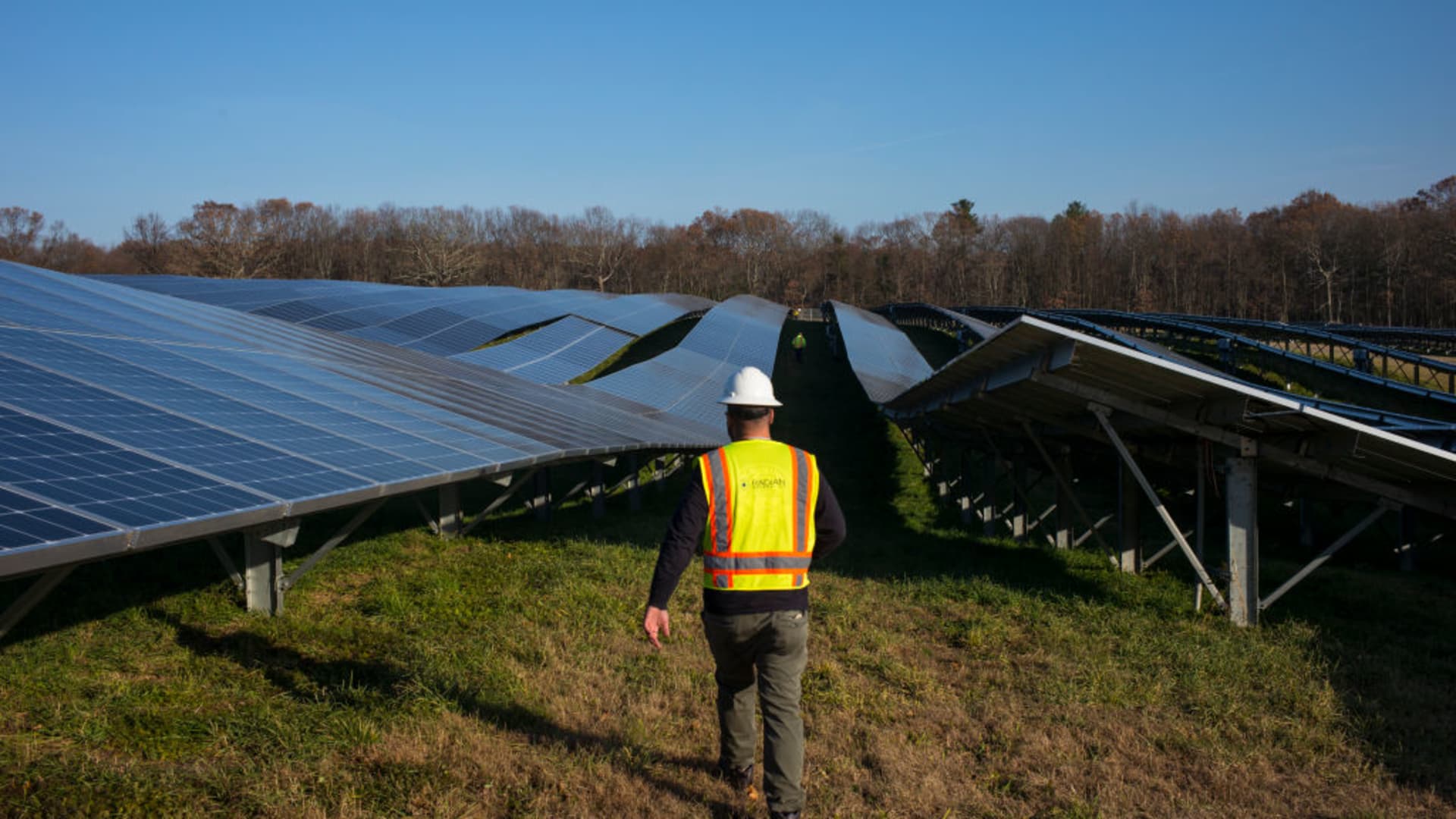Energy
Wednesday, September 7th, 2022 10:55 am EDT
Despite all the promise of a decentralized currency free from government controls, Bitcoin has received widespread criticism for the massive amounts of energy consumed by the millions of nodes and mining rigs out there generating the proof-of-work computations — but that criticism hasn’t fallen on deaf ears, and a number of major mining operators are now opting for renewable sources of energy in a bid to reduce BTC’s carbon emissions, with plans to reach zero emissions across the network by 2024.
What’s more, it looks like they’re well on their way to achieving that goal, with 62.4% of the network running at zero emissions by factoring in carbon-negative mining.
Bitcoin net zero emission trendline chart. Source: Bat Coinz.
” data-medium-file=”https://cleantechnica.com/files/2022/09/bitcoin-emissions-2024-400×355.png” data-large-file=”https://cleantechnica.com/files/2022/09/bitcoin-emissions-2024-800×709.png” loading=”lazy” class=”size-large wp-image-276193″ src=”https://cleantechnica.com/files/2022/09/bitcoin-emissions-2024-800×709.png” alt width=”800″ height=”709″ srcset=”https://cleantechnica.com/files/2022/09/bitcoin-emissions-2024-800×709.png 800w, https://cleantechnica.com/files/2022/09/bitcoin-emissions-2024-400×355.png 400w, https://cleantechnica.com/files/2022/09/bitcoin-emissions-2024-768×681.png 768w, https://cleantechnica.com/files/2022/09/bitcoin-emissions-2024.png 1011w” sizes=”(max-width: 800px) 100vw, 800px”>
Bitcoin net zero emission trendline chart. Source: Bat Coinz.
A new study by Bat Coinz has reportedly shown that Bitcoin is set to achieve a net zero emission by December 2024, with a relatively limited number of landfills providing the entirety of the 187.1 MW of power the network consumes.
“To put in context how achievable this is,” reads the report, “if Bitcoin mining companies focused on using previously vented sources of methane emissions (such as: vented landfill gas) it would take only 124 x 1.5 MW modules (around 50 mid-large sized landfills in the US fully combusting their methane for Bitcoin mining) to make the entire Bitcoin network carbon negative.”
If everything goes to plan, it could put Bitcoin on track to be the world’s first first monetary system to achieve net zero emissions without purchasing offsets. “We anticipate that Bitcoin mining using vented methane as power will initially grow at only 83% of the growth rate of flared gas mining (6.9 MW/month),” the study says. “Based on this more modest growth rate, we forecast that the Bitcoin network will become carbon neutral in Q4, 2024 fully.”
There Are Some Caveats Here
Look, there are definitely some caveats here. First, there’s the question of whether or not powering anything with landfill gas is really “carbon negative,” but burning off methane from sources such as biogas or landfills that would have gone into the atmosphere is one of the four recognized forms of carbon capture technology, and is recognized by Nasdaq as, “one of the few carbon-negative fuel sources.”
That said, there’s another argument to be made here — and that’s whether or not any amount of energy spent on Bitcoin is “worth it,” when that energy could be used to help prop up California’s energy grid during record heat waves, for example.
Indeed, this was the very point made in these pages, when Dr. Max Holland wrote that “even if the bitcoin network did use renewably-generated electricity for a significant proportion of its ‘work,’ since this work is essentially additional and wasteful compared to functional alternatives, there’s an opportunity cost. This is the foregone opportunity of using such renewable energy to instead displace coal-powered energy for the wellbeing of households, and for other basic economic tasks. This broader context makes a moot point of the protestation that bitcoin’s vast energy consumption is ‘renewable-compatible.’”
I, for one, would argue that the “functional alternatives” to Bitcoin (i.e., traditional banking and government issued fiat currency) have done more harm to the planet by enforcing class structures, enabling predatory financing, and siphoning resources from the most vulnerable communities over the past several decades than they usually get credit for, and that the good doctor’s dismissal of that speaks to his own privileged position as a de-facto benefactor of that status quo, but we’re not here to weigh the merits of Bitcoin.
Instead, we’re reporting on the fact that Bitcoin has gotten significantly “greener” since the last time you checked in on it — whether that’s enough to make it a more attractive offering to you that it’s been in the past is up to you.
You can read the report for yourself here, then let us know if a carbon-neutral Bitcoin would be enough to convince you to take a second look at the cryptocurrency in the comments.
Sources: BatCoinz, via Finbold.
Appreciate CleanTechnica’s originality and cleantech news coverage? Consider becoming a CleanTechnica Member, Supporter, Technician, or Ambassador — or a patron on Patreon.
Don’t want to miss a cleantech story? Sign up for daily news updates from CleanTechnica on email. Or follow us on Google News!
Have a tip for CleanTechnica, want to advertise, or want to suggest a guest for our CleanTech Talk podcast? Contact us here.
Advertisement
This post has been syndicated from a third-party source. View the original article here.




